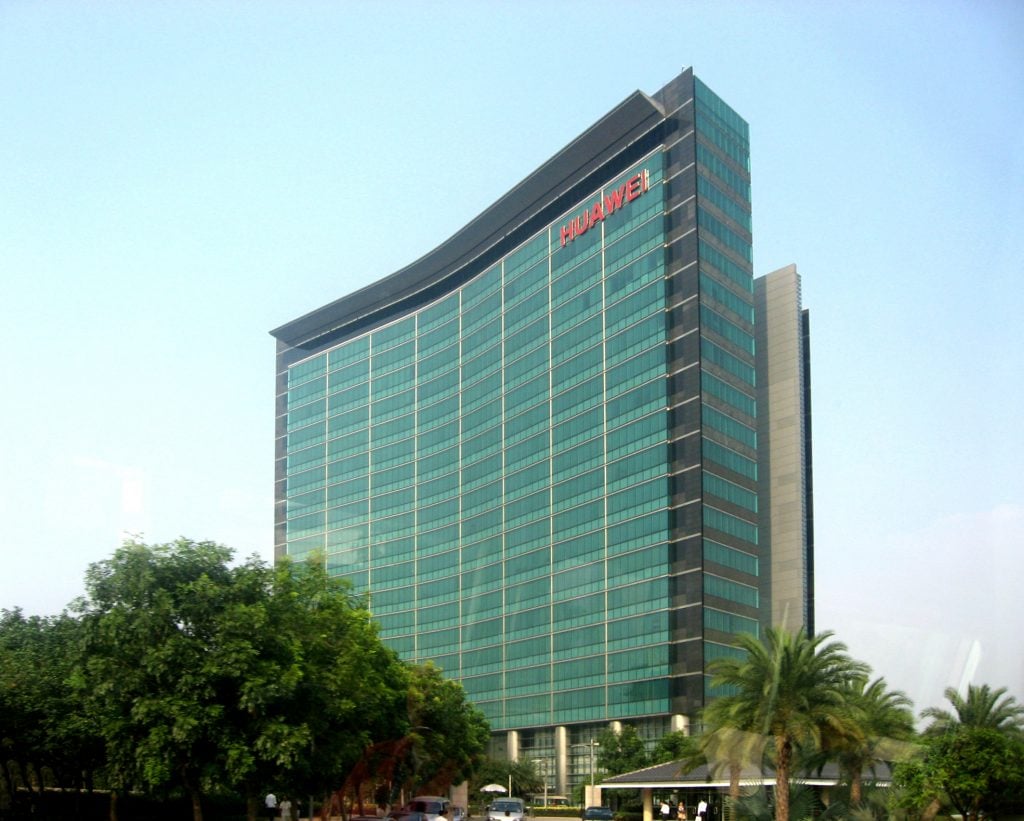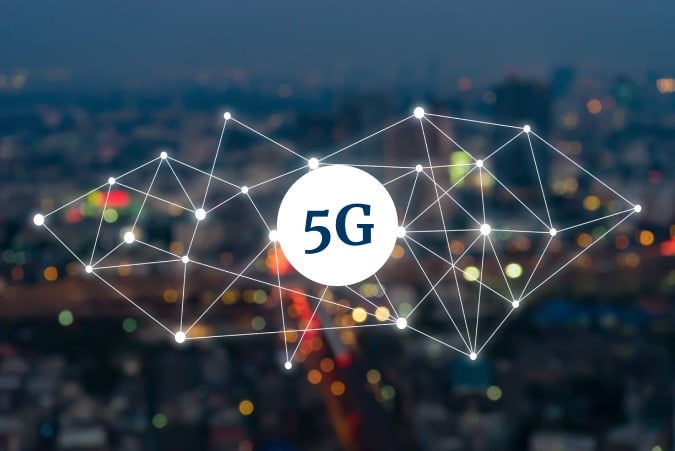By DEAN CHENG
Wars and pandemics, great destroyers of the status quo, often generate enormous societal change. An outbreak of hoof-and-mouth disease in the early 20th century, for example, gave the internal combustion engine a permanent lead over steam-powered automobiles. The First World War saw more improvements in aeronautical engineering and airplane manufacturing than the previous decade.
The unprecedented global shut down that has seen perhaps half of humanity locked down has generated enormous demands for Internet access, especially broadband. The sudden confinement of so much of the world’s work force has led to a massive increased demand for broadband, and not simply for entertainment. Telework, telemedicine and a major increase in videoconferencing are all major parts of the new work environment. Verizon, for example, has seen a 20 percent increase in Web traffic, a 12 percent increase in video services.
Many experts have predicted demand for broadband will greatly increase in coming years, especially for 5G networks capable of handling massive data flows at speed. The need would rapidly grow, as smart cities and autonomous vehicles became a reality. But the shift to telecommuting has likely accelerated that demand, shifting it to an immediate need. That demand for increased connectivity is not likely to completely recede even after COVID-19 is overcome, any more than public horse troughs returned after the hoof-and-mouth outbreak ended. Instead, if living in dense urban conurbations is seen as posing a growing health risk, a subsequent population shift toward suburbs and rural areas will only further heighten demand for extensive nationwide 5G access.
The ability to provide secure informational pipelines capable of handling massive data traffic has now become essential for the functioning of the broader economy, well beyond rapid downloading of movies and video-games. The benefits offered by 5G, whether in terms of faster upload and download times, or more stable connections, will provide immediate economic benefits in the post-COVID world. This will only sharpen the ongoing tensions between the United States and the People’s Republic of China over the role of Huawei in building those 5G networks.
Even before the outbreak of COVID-19, Washington and Beijing were battling over the security risks posed by Huawei systems. The United States excluded Huawei from its backbone communications infrastructure and is restricting sales of Huawei cell phones and tablets, but it was actively lobbying other nations to do the same.
China, in turn, has striven to reassure other nations that not only is Huawei secure, but that it is a bargain. For the Chinese leadership, building the global 5G network is a matter of government policy because it would ensure that China will enjoy sustained economic benefits servicing and upgrading those networks for decades to come. Given the Chinese leadership’s focus on establishing “information dominance,” it would also generate enormous strategic benefits.
As demand for bandwidth has surged the global pandemic has led to an explosion of hacking and other cyber crime activities, as criminal and state actors exploit the panic and demand for information. Reports estimate that thousands of phishing sites and scams are being created every day. This has included ransomware attacks on hospitals, as well as efforts to hack the World Health Organization and pharmaceutical companies engaged in COVID-19 vaccine research. Among the identified hackers are Chinese (Vicious Panda, Mustang Panda), as well as South Korean, Vietnamese and other groups.
One of the newest threats to arise comes courtesy of the massive demand for telecommuting and teleconferencing software. One of the key apps to fill the gap has been Zoom, software for video conferencing, audio conferencing, web conferencing, and messaging. It works on mobile and desktop devices, and in conference rooms. Unfortunately, Zoom has also been found to have major security gaps, including apparently uniwitting transfers of some encryption keys to China-based servers. This created the potential for Chinese elements to access the conferences, as well as data on participants’ cell phones, tablets or computers.
COVID: Crisis or Opportunity?

Huawei HQ in Shenzhen, China
We offer this opinion piece about increasing US responses to Iranian aggression just as President Trump has this morning “instructed the United States Navy to shoot down and destroy any and all Iranian gunboats if they harass our ships at sea.” Of course, we don’t know the crucial rules of engagement that will guide Navy…
The Chinese leadership has sought to exploit the COVID crisis to burnish its reputation in key countries where it can play a role in building 5G networks. It is no accident that one of the earliest recipients of Chinese medical attention was Italy — Italy is the only G-7 country to have signed onto the Chinese “Belt and Road Initiative” (BRI). As important, Huawei is establishing 5G testbeds in a number of Italian cities. For the Chinese, the ability to project the image of a good partner, providing aid to Italy when its EU partners and the United States did not, would undoubtedly generate good will and greater openness to Chinese participation in the 5G build-out.
This same approach marked such efforts as China’s arrangement for the world’s largest aircraft, a Russian AN-225, to carry tons of medical supplies to Poland, as well as Chinese provision of medical teams and aid to German towns hard hit by the virus.
There would seem to be two implicit messages conveyed by the Chinese. The first is that China is a good partner, providing aid and assistance to when countries need it. The other is that China is a reliable partner, especially in terms of supply chains, whether for personal protective equipment (PPE) or high technology items.
To support these benign messages, Beijing has also sought to quash any attempt to link COVID-19 to China, and in particular to reject any suggestion that the Chinese government bears any responsibility for its spread. Chinese officials have said that COVID-19 may have come from the United States (with Chinese social media discussing American participants in the World Military Games in China last October). The official Xinhua timeline for the coronavirus pandemic emphasizes its cooperation with the WHO, while making little mention of Dr. Li Wenliang, the doctor who tried to warn higher authorities of the outbreak of a new disease, caught it himself and died.
This narrative is belied by the reality that China has neither been transparent about the coronavirus outbreak within its borders, nor been a good or reliable partner in dealing with the disease. China’s suppression of information about the disease, including the muzzling of Dr. Li, have become much more widely known. China’s delayed quarantine, admitted by the mayor of Wuhan, almost certainly contributed to the global spread of the pandemic.
Even more damaging to the Chinese narrative, however, has been the dishonesty of its claims. In the case of Italy, for example, much of what Chinese media presented as aid was actually equipment that Italy purchased from China. Many other European countries, including Spain, the Netherlands and Turkey have found that a range of Chinese medical items, including everything from masks to testing kits, did not work or was defective.
In other cases, exports of badly needed medical equipment from China have been delayed due to bureaucratic red tape. More worrisome, some reports indicate that Beijing has suddenly imposed export restrictions on COVID-19 related medical equipment. That is, even equipment that has been paid for may not be exported, raising fundamental questions about the reliability of the Chinese portion of supply chains.
At the same time, Chinese efforts to deflect responsibility for the COVID-19 outbreak have also created growing negative images of the PRC. Chinese officials, for example, have not only accused the United States as being the source of the virus, but also Italy. It is clear that while Chinese doctrine on political warfare calls for coordinated, integrated messaging, that remains an aspirational goal.
Implications for the Future
It is very clear that the Chinese leadership hopes to exploit COVID-19 and its aftermath to help shape a world where China’s reputation, soft power and technological access and capabilities are all enhanced. In particular, building on Huawei’s ability to sell quality 5G equipment at a substantial discount, China hopes to take advantage of the burgeoning demand for broadband to ensure that Huawei will be integrated into the global informational ecosystem.
But China’s actual behavior should serve as a warning to economic and strategic decision-makers. It is not at all clear that China is either a good or reliable partner, especially in terms of supply chains. If Chinese PPE provided to foreign customers often fails to work, it may not be the result of a deliberate decision to export ineffective equipment; indeed, this is unlikely given China’s political goal of improving its reputation and standing. It does mean that, even in the case of relatively low-technology systems such as masks and chemical tests, China’s quality is abysmal. What might this suggest about Chinese-built telecommunications systems?
In fact, the 2019 report from the Huawei Cyber Security Evaluation Centre (HCSEC) Oversight Board about the security of Huawei’s equipment already emplaced in the UK was scathing. Not only were there a variety of security vulnerabilities, but even previously identified problems had not been addressed by Huawei. There seems to be a pattern of both poor quality control and post-sales support in Chinese manufacturing, which could be catastrophic if allowed in strategic systems such as 5G communications networks. The potential Chinese willingness to impose export controls and restrictions in time of crisis only further raises questions about the resilience of Chinese-manufactured networks, should a political rather than a health crisis arise.
COVID-19 further complicates this picture by retarding development and roll-out of alternative 5G networks. Apple has indicated its first 5G enabled iPhone may be delayed from a planned September unveiling. Dish Network has indicated that COVID-19 will delay the construction of its 5G network, but the nationwide lockdown has affected all telecom companies’ construction efforts. Samsung, the company best situated to challenge Huawei’s ability to construct an integrated 5G network, from mobile telephones and tablets to base stations to servers and routers, also fears that COVID-19 may retard its efforts. The impact of the global shutdown on financial institutions is also likely to affect funding for this massive infrastructure project.
But this situation may provide Western nations with a golden opportunity. If COVID-19 is likely to affect everything from auctions for spectrum to infrastructure financing, Western nations should take the opportunity to reconsider their willingness to allow the PRC to construct such a vital part of their national information and strategic backbones. Given the competing demands all leaders are likely to face as the world emerges from COVID-19, deferring key decisions on 5G (and the attendant costs of construction) may make financial, as well as political sense. It would also give Huawei’s competitors, including not only Samsung but Ericsson, Nokia and others, a chance to catch up. If nothing else, having more competition would provide national and corporate decision-makers more options, and therefore more leverage in any negotiation with Huawei.
Indeed, Huawei’s own executives seem to recognize that COVID-19 may have altered the landscape. In a letter to the British parliament, the head of Huawei UK warned: “Disrupting our involvement in the 5G rollout would do Britain a disservice.” Like its behavior regarding COVID-19, Chinese statements such as this may well reveal far more than was intended.
Heritage Foundation’s Dean Cheng is one of the top experts on the People’s Republic of China — and its military.

No comments:
Post a Comment